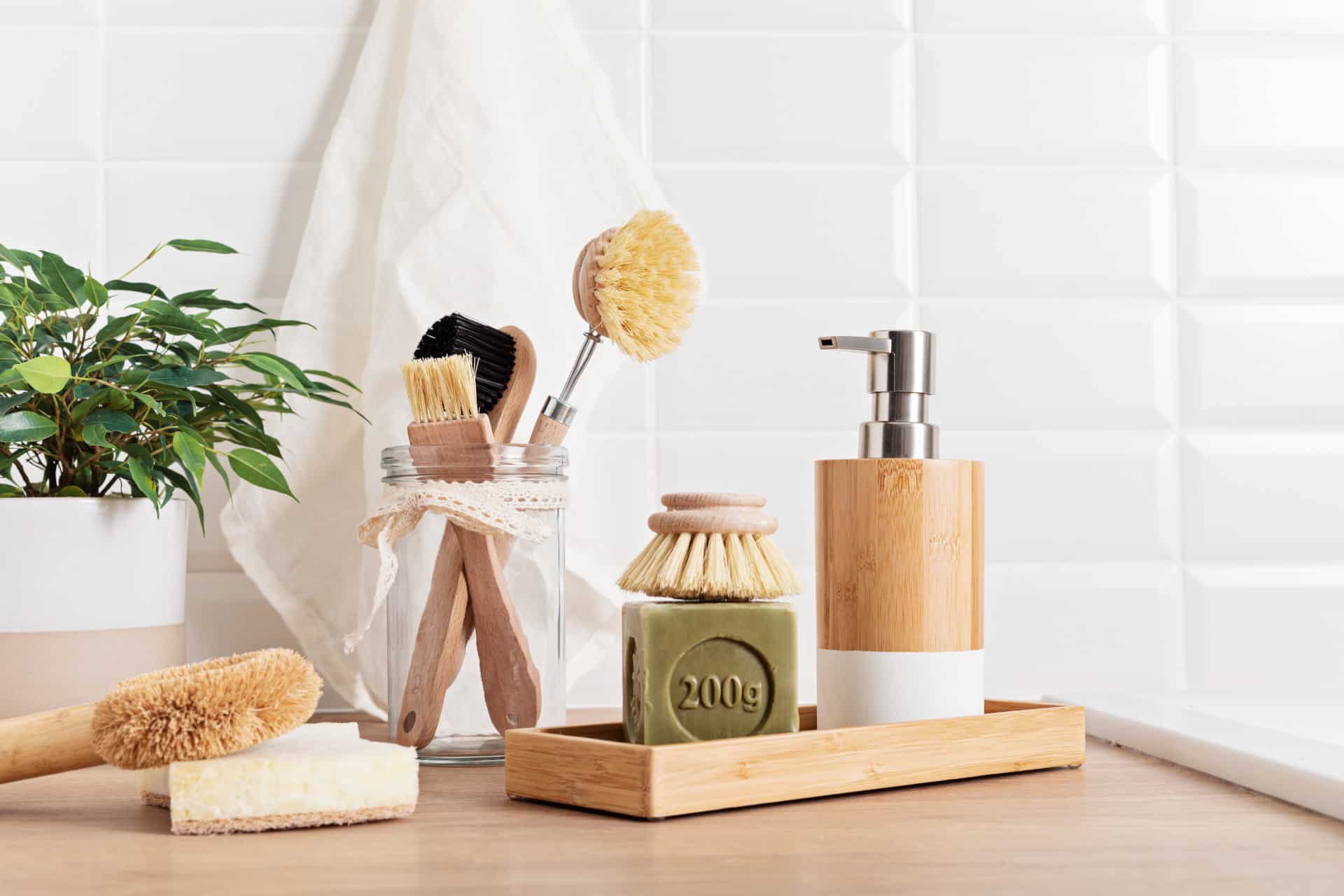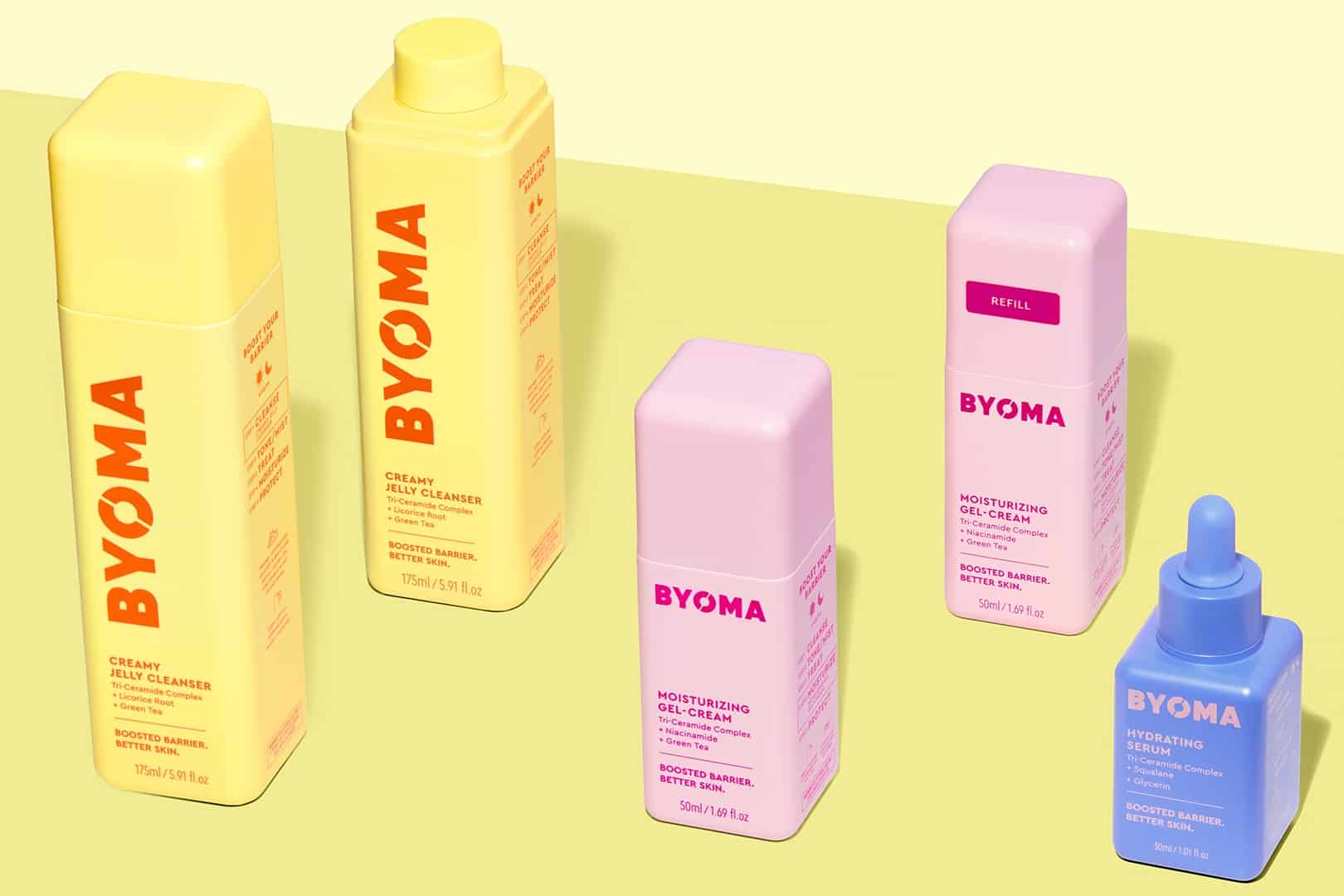The Best & Safest Non-Toxic Cookware For a Healthy Kitchen
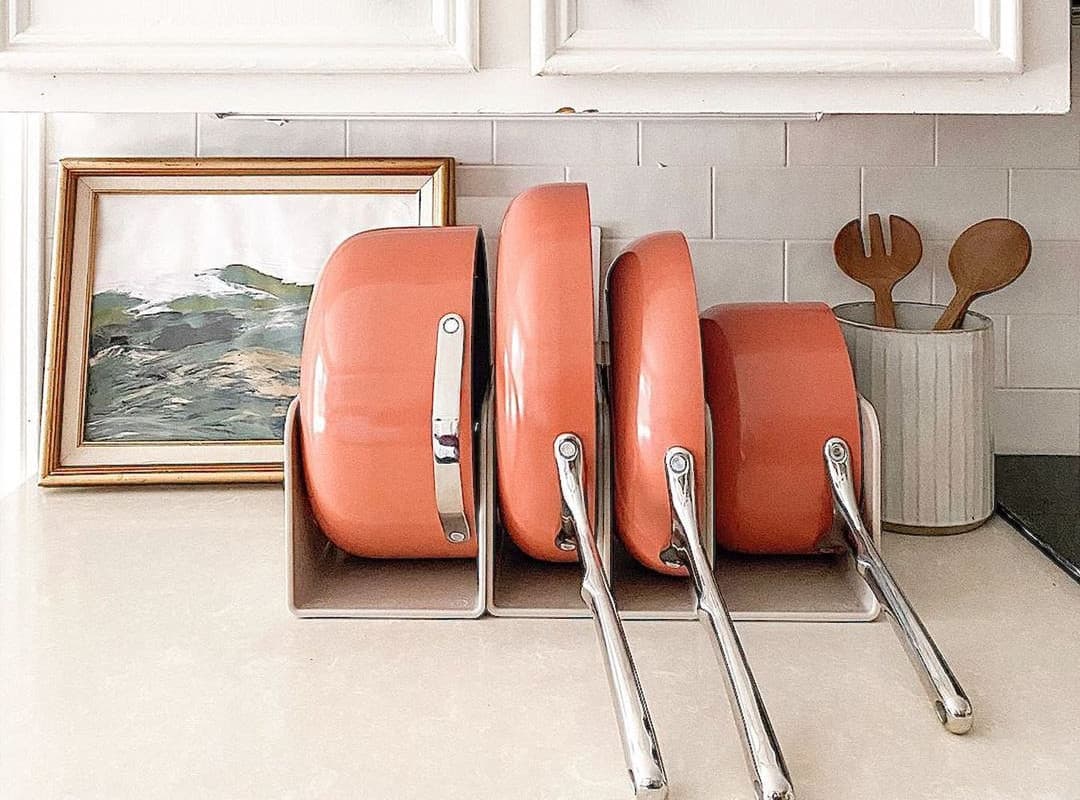
If you’ve heard that Teflon-coated non-stick pans can release toxic fumes when heated to high temperature, it’s true. The vast majority of non-stick cookware sold today is coated with toxic Teflon. If you’re searching for a safer alternative to traditional non-stick cookware and are looking for something safer and non-toxic, we’ve put together a guide with everything you need to know.
Using Teflon on a pan isn’t the only way to make it non-stick—there are safer, non-toxic alternatives available that are the perfect fit for anyone looking to create a safer kitchen.
The Problem With Teflon-Coated Cookware
Let’s take a closer look at Teflon and why it’s such a problem for health-conscious home cooks.
PTFE (Teflon): Teflon is the brand name used for a group of man-made chemicals, the most common of which is polytetrafluoroethylene (PTFE).
Teflon is inert in its solid form, meaning it will not react to other chemicals. The common wisdom is that the small amounts of Teflon you might ingest will pass through your digestive tract and not hurt you. (2)
The real risk of Teflon is from overheating. At high temperatures (it begins to deteriorate at 260 °C (500 °F), and decomposes above 350 °C (662 °F), the Teflon will break down into gas form, which is extremely toxic and linked to flu-like symptoms called polymer fume fever. (1) There are many anecdotal claims that this gas is extremely toxic to birds.
PFOA: Perfluorooctanoic acid (PFOA) is another chemical of concern in Teflon. This chemical can build up in the body over time and cause unknown health effects to us and our environment.
In 2014, the EPA (Evironmental Protection Agency) took administrative action against DuPont, the manufacturer of Teflon. They accused the company of failing to report risk of injury to human health and the environment due to PFOA exposure between 1981 and 2001. DuPont was ordered to pay $10.25 million to settle the case.
The industry has been phasing out the use of PFOAs and concentration of PFOA in human urine has been decreasing as a result. However, an older Teflon pan (early 2010s or before) most definitely has PFOA.
Aluminum
While the risk of aluminum cookware is hotly debated, experts are still unsure whether exposure to aluminum plays a role in Alzheimer’s disease.
It’s true that using aluminum cookware will result in leeching of aluminum into your food. This can definitely cause your food to taste different, regardless of whether the aluminum is a health risk.
Aluminum will leach much more if used to cook acidic foods like tomato sauce, lemon juice or vinegar.
While the jury is still out on whether it’s safe to use aluminum cookware or not, we prefer to err on the side of caution and avoid it.

Safer Materials
Now that you know the risks of Teflon and aluminum cookware, let’s take a closer look at the safer alternatives.
Ceramic – Ceramic cookware has become a popular alternative to traditional non-stick pans with Teflon. Typically, the non-stick coating in ceramic pans is made from silicon, which is essentially sand. This does not include Teflon (PPOA, PTFE) or any other potentially unsafe coating.
Be careful with cheaper ceramic cookware, however. A cheaper piece of ceramic cookware might break down over time, and there is some concern of cheaper ceramic coatings containing nanoparticles.
Stainless Steel – Strong, durable and heavy. These pans resist wear and tear and last a long time. Stainless steel is a metal alloy that typically contains iron, chrome and nickel. Stainless steel should be safe to use. Some research has expressed concern with nickel and chrome leeching into food, but since stainless steel is fairly stable, this shouldn’t be a concern. An exception might be for stainless pans that have been damaged or scratched due to heavy scouring.
Carbon Steel – An alternative to stainless steel which its own pros and cons. Carbon steel require seasoning and cannot be used to cook highly acidic foods like tomatoes. However, it’s a safe and non-toxic material you can be confident in using.
Cast Iron – Like stainless steel, these pans are also strong, durable and heavy. Cast iron pans can leech iron into food, but this is considered a healthy food additive by the FDA. Unless you’re an individual who is at risk of iron overload, cast iron is a great and safe material for cookware.
Porcelain Enamel – Essential a form of glass. Most enameled cookware is cast iron with an enamel coating. There is some concern with this cookware containing lead, as the enamel coating is typically made of clay. High quality enamel cookware like Le Creuset should not have this issue, but be careful with enamel cookware made by cheaper brands.
Tempered Glass – Inert, safe and non-toxic. The main concern with glass cookware is handling it safely to prevent breakage
Brands
These brands all safer, non-toxic alternatives to typical Teflon-coated non-stick cookware. From pots and pans to bakeware, dutch ovens and even tagines, you’ll find everything you need for creating a safer, non-toxic kitchen.

PURE CERAMIC COOKWARE
Xtrema
Xtrema is a family-owned company that makes pure 100% ceramic cookware. They offer skillets, saucepans and pots, along with bowls, teapots and accessories.
There’s no artificial non-stick coatings used on these pans, so be sure to use an adequate amount of oil when cooking with them.

AMERICAN-MADE CAST IRON
Lodge
Lodge has been making high-quality cast iron cookware in the USA since 1986.
They offer skillets, griddles, dutch ovens, bakeware and accessories.
Lodge cookware also uses recycled packaging and the company has started several company initiatives to reduce their environmental impact. These include a company-wide recycling program and donation of all foundry sand to local interests.
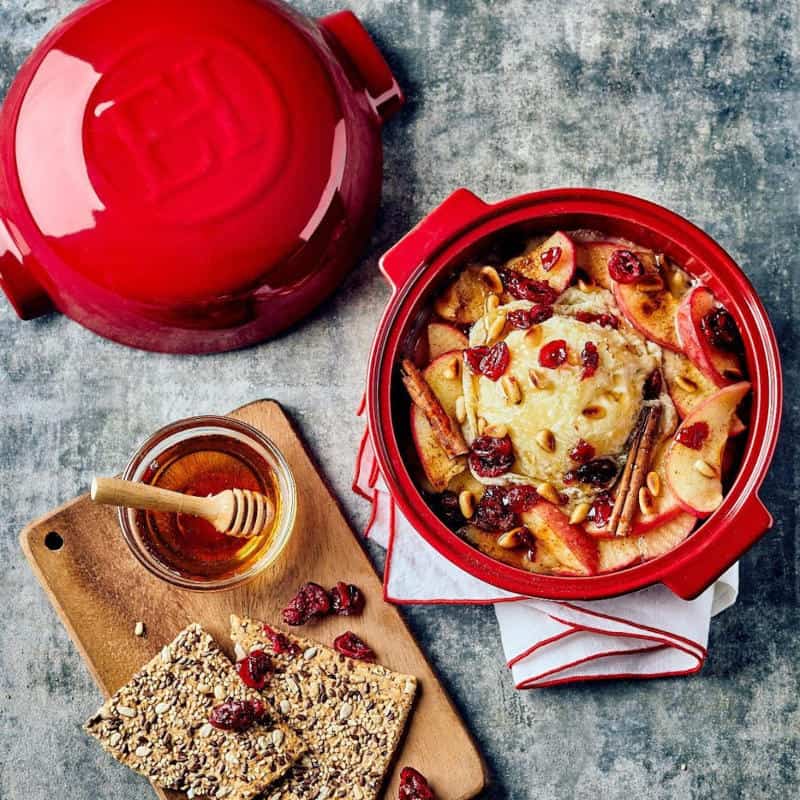
QUALITY FRENCH BAKEWARE
Emile Henry
Emile Henry is a quality cookware brand started in France. Their flagship collection is their burgundy clay cookware, all of which is made from non-harmful materials.
They offer everything from dutch ovens to bakeware and even tagines for a little Morrocan-inspired cooking.
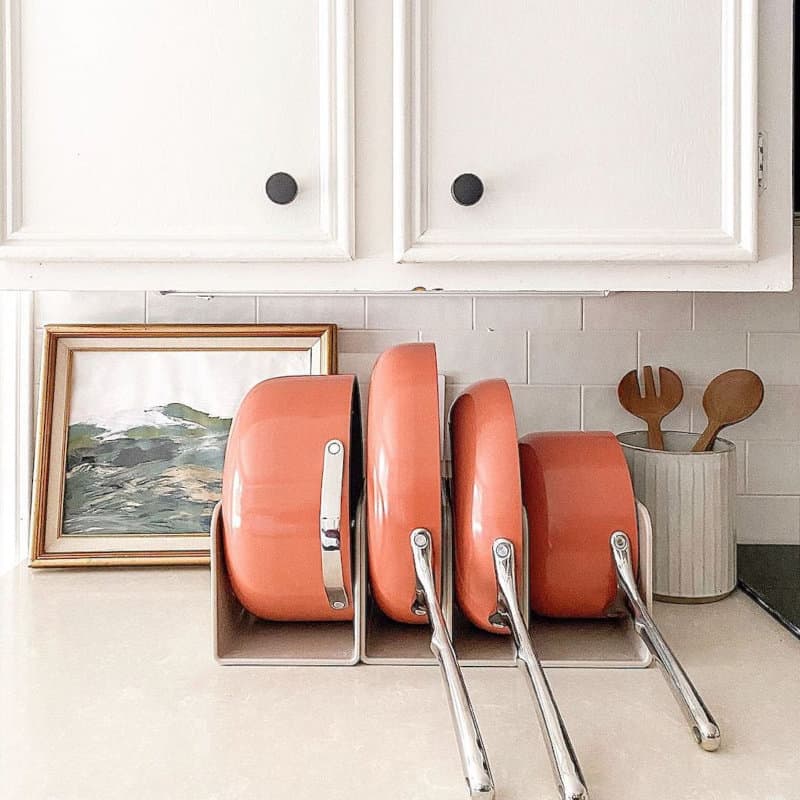
SLEEK & MODERN CERAMIC
Caraway Home
Caraway home offers a line of modern ceramic-coated cookware in a variety of colors.
Their line includes sauce pans, dutch ovens and fry pans.
They also offer free shipping, free returns and a 30-day free trial. The packaging used in shipping is recycled cardboard, low impact dyes and zero plastic bags.
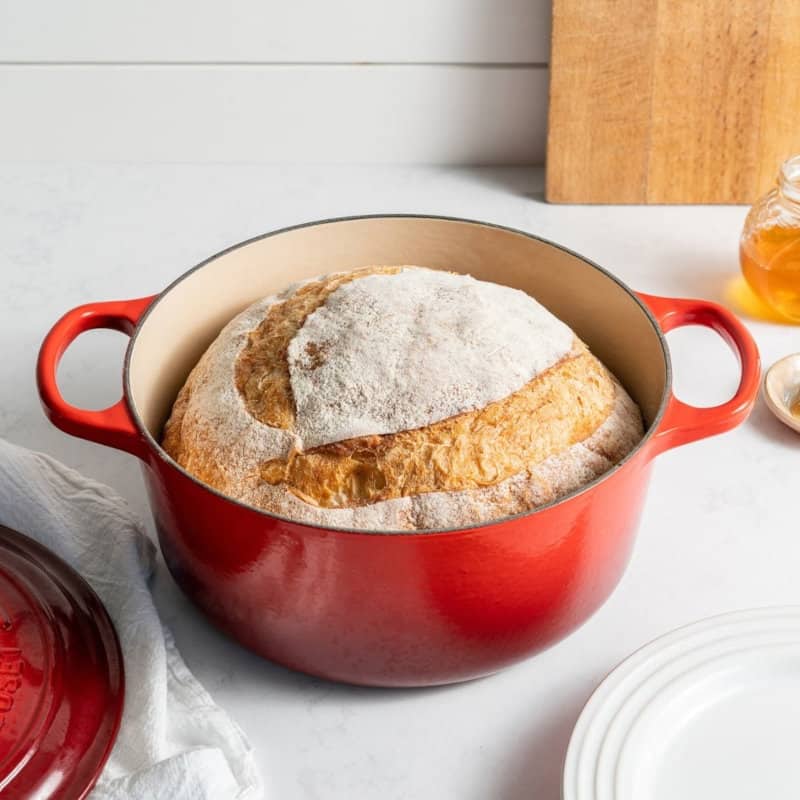
FRENCH-MADE PREMIUM COOKWARE
Le Creuset
Known for their iconic flame-red french ovens, Le Creuset is a French brand offering cast-iron, enamel-coated cookware from roasters, to bakeware, skillets, fry pans and saucepans.
Many Le Creuset items offer a lifetime warranty, which is a testament to their quality.
Beware that some of their non-cast-iron pans use Teflon as a nonstick coating. Best stick with the cast iron and enamel cookware.

STAINLESS & CARBON STEEL
Made In
Another French company, Made In offers stainless and carbon steel pots, pans, knives and cookware sets.
Avoid their non-stick pans, however: they’re coated in Teflon.
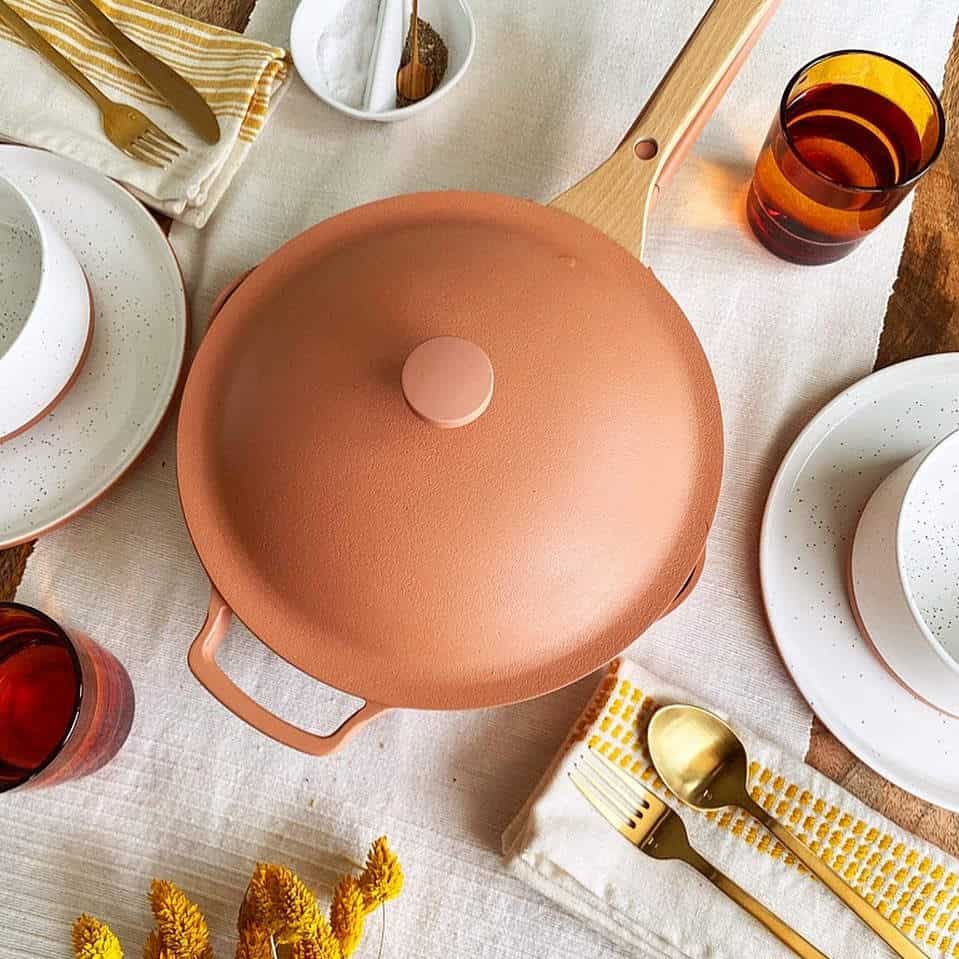
ALL-IN-ONE SOLUTION
Our Place
The flagship product of Our Place is the Always Pan, a clever all-in-one product meant to replace all of your stovetop cookware.
The pan itself is made from an aluminum core with a ceramic non-stick surface. It also comes in (at the time of writing) 5 nice and modern colors to choose from.
This pan, unlike other ceramic pans, is not oven-safe, which might be a downside for some.


